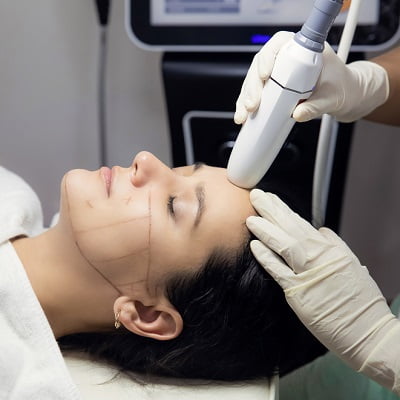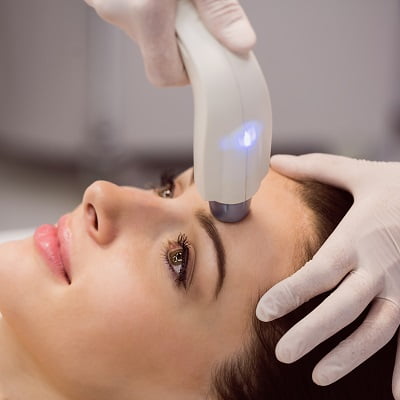
Ultrasound waves are used in a non-invasive procedure called high intensity focused ultrasound (HIFU) to treat a variety of illnesses. The use of ultrasound is essential for HIFU treatment to be both safe and effective. During the procedure, ultrasound waves are directed at a particular body part, creating heat that causes the targeted tissue to be destroyed. In order to ensure that only the intended tissue is affected, ultrasound imaging enables doctors to precisely target the area of interest and monitor the treatment in real-time.
What is HIFU Treatment?
High-Intensity Focused Ultrasound, or HIFU, is a treatment method. High-intensity ultrasound waves are used in this minimally invasive medical procedure to target and heat up particular body tissues. This technology is employed in medical procedures like the removal of tumors, prostate cancer, and uterine fibroids. Additionally, it is utilized in some cosmetic procedures like facelifts, wrinkle reduction, and skin tightening. Without the use of any surgical incisions or needles, the focused ultrasound energy generates heat at a particular depth that causes thermal coagulation and necrosis of the targeted tissue.
Ideal Candidates For HIFU Treatment in Islamabad:
HIFU (High-Intensity Focused Ultrasound) is a non-invasive cancer treatment that uses high-intensity ultrasound waves to destroy cancer cells. Ideal candidates for HIFU are those who have:
- Localized prostate cancer – HIFU is an effective treatment for prostate cancer that has not spread beyond the prostate gland.
- Early-stage breast cancer – HIFU can be used to treat small tumors in the breast.
- Uterine fibroids – HIFU can be used to treat benign tumors in the uterus.
- Pancreatic cancer – HIFU can be used to treat pancreatic cancer that has not spread beyond the pancreas.
However, it is important to consult with a doctor to confirm whether HIFU is the best treatment option for a specific individual.
The Role of Ultrasound in HIFU Treatment and Its Safety:
In order to ensure that the surrounding tissues and organs are not unintentionally harmed by the treatment, physicians can also see these structures using ultrasound imaging. When treating tumors or other lesions near vital organs like the liver, pancreas, or kidneys, this is especially crucial.
Additionally, right after the procedure, the efficacy of the treatment can be evaluated using ultrasound imaging. This enables medical professionals to decide whether a patient needs follow-up care or if additional treatments are necessary.
Advantages of HIFU Treatment:
HIFU stands for High-Intensity Focused Ultrasound. The advantages of HIFU include:
Non-invasive:
Unlike surgery, HIFU doesn’t require any incisions or cuts, making it a non-invasive procedure.
Minimal pain and discomfort:
Patients undergoing HIFU usually experience minimal pain or discomfort during the procedure due to the localized nature of the treatment.
Quick Recovery:
Since the procedure is non-invasive, patients can recover quickly and return to their normal activities soon after treatment.
Targeted treatment:
HIFU uses ultrasound waves to target only the specific areas that need treatment, minimising the chance of damage to surrounding tissues.
No radiation exposure:
HIFU does not involve any ionising radiation, which means there is no risk of radiation exposure or associated health risks.
Effective in treating several conditions:
HIFU has been found to be effective in treating several medical conditions, including prostate cancer, fibroids, and essential tremors.
Overall, HIFU is a safe and effective treatment option that offers several advantages over traditional surgical methods.
Take Away:
In conclusion, ultrasound is essential for ensuring the security and efficacy of HIFU treatment. It lowers the possibility of harm to neighboring tissues and organs while also enabling doctors to precisely target and monitor the treatment in real time. HIFU offers patients a secure and efficient substitute for conventional surgical procedures because it is a non-invasive procedure.











Book Appointment